I thought it would be helpful to write about the main different ways and methods you can use to get smoked bacon, as I’ve started structuring my masterclass in bacon making.
You can choose a variety of ways and equipment, depending on what setup you currently have. To be hopefully helpful, I will include a method to create smoked bacon, without a smoker.
I’m going to focus on what the process is, and what equipment you need. The smoking is always after the dry salt curing or wet salt brining (pickling).
I’ll focus on the smoking aspects in this article.
4 Ways to Smoke Bacon
After trying various methods, they all get categorized into these styles I’ve found.
- Liquid Smoke Bacon (No Smoker)
- Wet Brined, Cooked/Smoked Bacon (Hot Smoked)
- Dry Cured, Cooked/Smoked Bacon (Hot Smoked)
- Cold Smoked and Dried Bacon (Cold Smoked)
You are either using liquid smoke, cooking/smoking at low temperatures, or drying and cold smoking.
There are also smoke guns (using a type of smoke vapor in a bowl), that use a vapor and just infuse it on the surface.
These aren’t going to impart much smoke flavor since you will cook the bacon and most of the vapor smoke flavor will disappear.
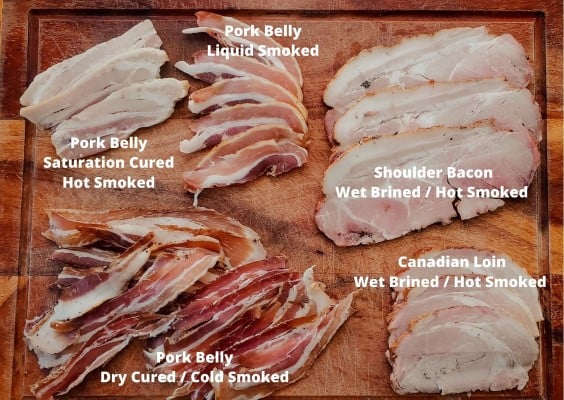
If you wet brined/pickle, I’ve found you come out with a more, ham-style bacon like this:
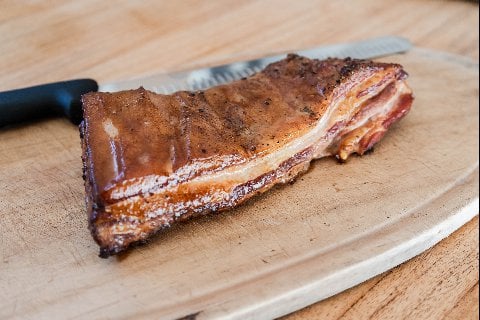
Traditional dry-cured cold smoked bacon intensifies the flavor of the spices/herbs, but it also takes the longest (good bacon takes time to make).
Brined ham bacon like Canadian Loin bacon, is hammy, but still, a lovely project to perform. Which is wet salt brined, and then low-temperature cooked to an internal cooked temperature (then fried when served/ready).
You can honestly still get amazing results by curing bacon and then liquid smoke. I would not have included this if it didn’t produce excellent results for those without a smoker.
I did some experiments when I was putting together my bacon masterclass which covers everything in detail around this.
Liquid Smoke Bacon (No Smoker)
From the experiments and testing over the years, I have found that if you apply, very lightly, the liquid smoke flavor of your choice during the curing process, you can get the right smoke flavor into the bacon.
As well as after curing, and when you are drying the bacon – you end up with quite an amazing smoked bacon flavor, without smoking the bacon.
Although you can make liquid smoke yourself, I have had a preference so far to buy a good quality type, pure liquid smoke.
Liquid smoke is the condensation of liquid from the wood when smoked.
Of course, just like any type the smoking it’s full of natural chemicals and should be used in small amounts.
To give you some idea I would probably use about 1 tablespoon for each 2 pounds of bacon.
Now below I have categorized smokers of bacon into two groups:
- Cooked and Smoked (Hot Smoked)
- Smoked and Dried (Cold Smoked)
Wet Brined, Cooked & Smoked Bacon (Hot Smoked)
Any type of low and slow-style smoker can work for this type of hot-smoked bacon. The key here is the low temperature, which I find ideally around 200°F/100°C or slightly below this temperature.
This will mean, that as the bacon very slowly cooks, it will be able to take on more of the smoke generated by the wood you are using. It also won’t render the fat.
Dry Cured, Cooked & Smoked Bacon (Hot Smoked)
Using salt and spices, without water to bind the salt and diffuse some of the water in the bacon, it is about curing the bacon and then performing the same method of indirect cooking/hot smoking the meat.
Due to the various designs now available for smoking or other foods (here are some other smoker tools I wrote a article on), below will be an explanation of different smokers you can use for these different methods of making bacon.
Cold Smoked and Dried Bacon
Cold-smoking bacon is a longer-term approach, it depends on the cut of meat you’re using. For many pork belly which turns into streaky bacon is always the stock standard cut to use.
However, many other parts of the pig or a different animal can be used for making bacon as well. The issue is that you need a certain level of fat, so during the cooking process, the meat isnt dry.
For me, bacon isn’t bacon without fat.
Different Types of Smokers and What You Can Use Them For
- Charcoal and Wood Indirect Smokers
- Electric and Gas Smokers
- Pellet Grill Smokers
- Gas Grill Indirect with Pellet Tuber Smoker/Smoker Generator
- Smokehouse
Charcoal and Wood Indirect Smokers
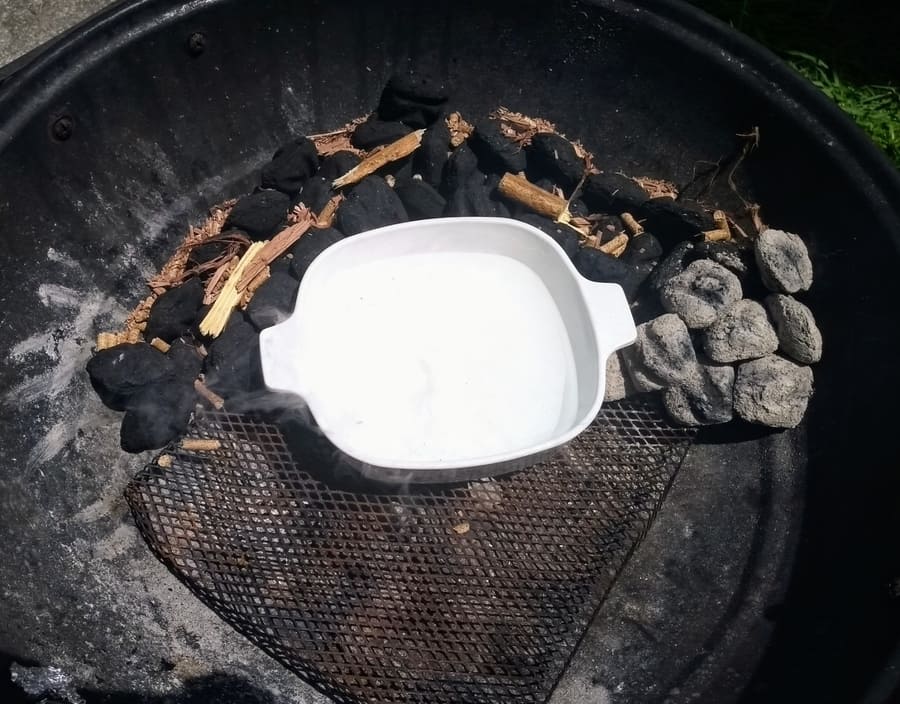
For Hot Smoking Bacon,
Cold Smoking bacon (with accessories)
This is the low and slow style of smoke, they come in many shapes, but achieve the same results – the styles and shapes I’m aware of are:
- Kettle Smoker
- Drum Smoker
- Barrel Smoker
- Offset Smoker
- Charcoal Vertical Smokers
All these smokers are primarily designed for indirect hot smoking. With a smoke generator or other smoking device – they can be retrofitted to turn them into cold smokers (here are other DIY cold smoker ideas I put together).
For retrofitting these devices could be used:
- Pellet Tube Smoker
- Maze Smoker
- Smoker Generator
- Separate wood smoking area, with a ducted pipe to the other smoker.
Electric and Gas Smokers
For Hot Smoking Bacon,
Cold Smoking bacon (with accessories)
One of the most convenient categories for hot smoking (pellet grill smokers are too) since you have control over temperature via a thermostat or set dial for propane/LPG, the heat is set using a thermostat or dial.
The masterbuilt (popular model) smoker is an absolute classic, insulation is reasonable, but you have an heating element and a tray of wood to produce smoke. Simple and effective, one of the most popular smokers and at an economical price vs. many other smokers – link to review.
You can even boost the smoke flavor by using a pellet tube smoker however the area is small in the chamber, so it may produce an additional head. For cold smoking, this would need assessment.
Tip – There are many different configurations you can use for smoking bacon. But what I have found is hanging is better than using racks. If the racks cover certain surfaces on the meat, smoke might not adhere or penetrate it as well.
You can always just put some holes in a slab of pork belly that you are going to be using, and then use a little stick or chopstick to feed the loop above the rack. Or you can just use S hooks.
Pellet Grill Smokers
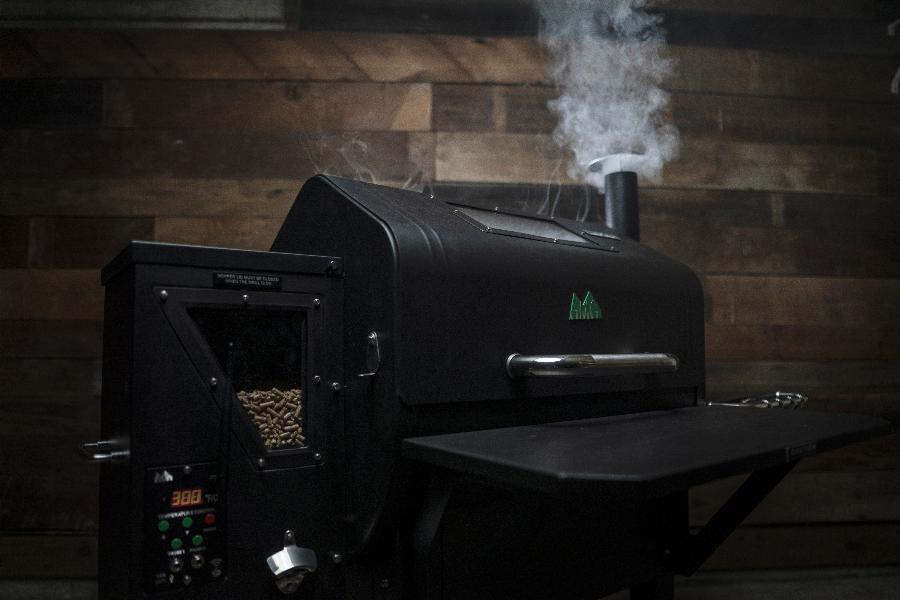
For Hot Smoking Bacon,
Cold Smoking bacon (with accessories)
Although these have been around since the 1980s, they have evolved and become very popular, maybe due to the convenience factor of these smokers (inconvenience is good too sometimes I find).
I did a review for a company of a few different models. They operate via thermostat controlled direct wood pellet heat with an auger screw feeding the pellets which produces the smoke and the heat.
Not designed to have food hung inside the pellet grill, some do come with a higher hood. Utilizing the racks works very well for smoking bacon, often 2 racks can be set up.
Because these are thermostat-controlled and often have built-in temperature probes it is a set-and-forget style of cooking and smoking a.k.a. low and slow.
Gas Grill Indirect with Pellet Tuber Smoker/Smoker Generator
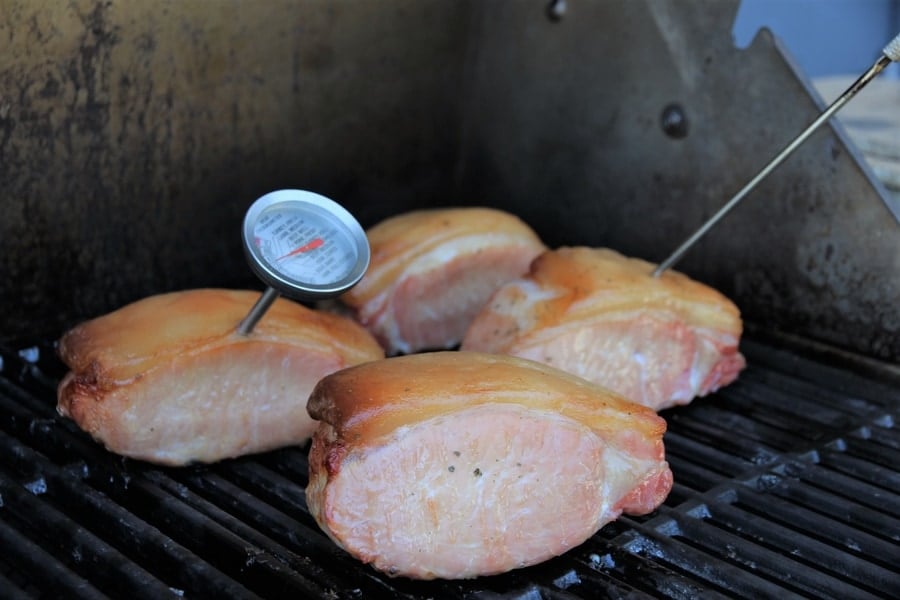
For Hot Smoking Bacon,
Cold Smoking bacon (with accessories)
With a grill propane/LPG grill on many different projects, I’ve placed a pellet tube smoker inside. For safety reasons, I take the gas/LPG/propane tank out of the gas grill because you don’t want something happening.
I also put a hole in the side of my gas grill, which means I can pump in a smoke generator as another option.
Smoke generators are very useful devices because they use a pump with a variable control to choose the level of smoke burning. The way it works is a venturi effect and it is drawing the smoke around a pipe.
One other aspect is that the smoke generator is external to the chamber where smoking happens whether it’s hot or cold smoking. Therefore you aren’t affecting the heat source like a pellet tube smoker.
My favorite smoke generator is the “Smokai” I’ve been using it for many years and it’s the best in the world – in my opinion – review here.
Smokehouse

For Cold Smoking Bacon
Traditionally a smokehouse has a small fire burning in one location and then a tunnel or pipe to another location, however, this is mainly for cold smoking (link to cold smoking article category list on this site).
But if you have the wood in a smokehouse, 4 or 5 ft high and 4 ft wide. You could potentially get a heat source like a gas burner inside and have some smoldering chips of wood to slowly cook and smoke bacon.
As you can imagine, smoking and cooking cured meat, may need some tweaking to get this type of smokehouse dialed into the right temperature. But the learning process can be rather fun for some!
Also as mentioned above if you have a small open fire and a pipe or tunnel you are creating a very traditional European-style smokehouse.
One of the advantages that you have with an open fire, is that often a good amount of airflow, oxygen, and humidity will pass through the tunnel into the smokehouse (depending on where you are in the world – most cold smoking is done in winter of course).
As the smoke travels through the tunnel it is cooling down by the time it gets to the smoking chamber.
TIP – hot smoking or cooking/smoking, humidity does not play as important a role as when you cold smoking. If you’re doing any cold smoking over more than a few hours, you want to have 70 or 80% humidity to stop the outside of the meat from drying out too much during the cold smoking process.
Low Tech – Charcoal/Wood Simple Cold Smoker
When I came back from some extended overseas travel I wanted to give a friend some cold smoked bacon as a present.
I had all my tools and equipment in storage. The only thing I had was a very basic small kettle charcoal smoker.
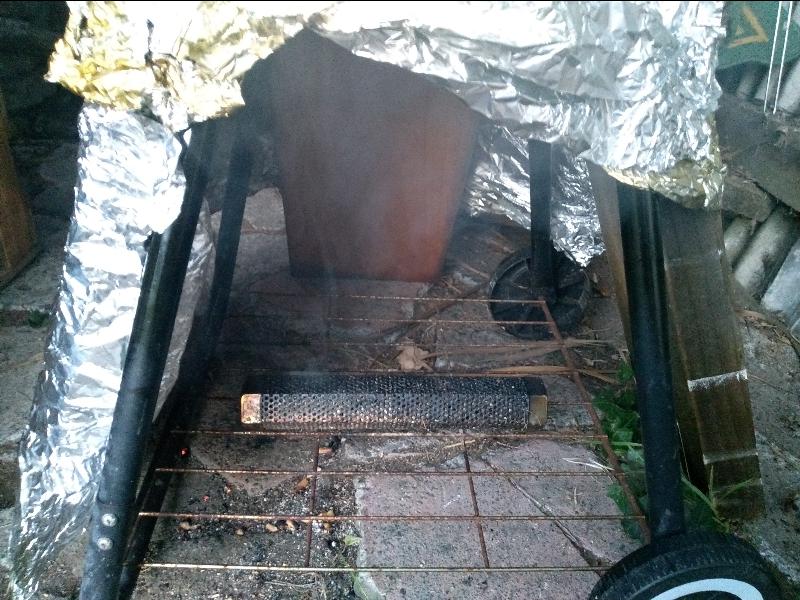
So ended up wrapping the legs with tinfoil and placing a well-lit couple of pieces of charcoal in a pan underneath the kettle grill. Then, using some smoking wood chips, I just sprinkled them on the charcoal to smolder away underneath, there was an air intake hole on the bottom of the kettle.
Although I had to leave the pork belly that was cured on a rack inside the kettle, it did the job and the results worked!
I thought this would be a cool story just to highlight how simple you can make things.
Smoke-Generating Accessories in Detail
Pellet Tube Smoker
This is simply a perforated tube, you fill the tube with wood chips or smoking (food grade) wood pellets. You light the end, while it sits vertically and let it burn until about 8 or 10 chips or pellets are lit. This generally has a flame of about 6″ high.
You blow out the flame and it smolders away.
I generally find about 4 to 5 hours of cold smoking from the 12-inch pellet tube smoker depending on the wood and shape.
As I mentioned above these do generate heat, so if you use a small confined space, you can raise the temperature, not what you want, especially when cold smoking (ie. technically under 86°F/30°C – I prefer under half 55°F/15°C)
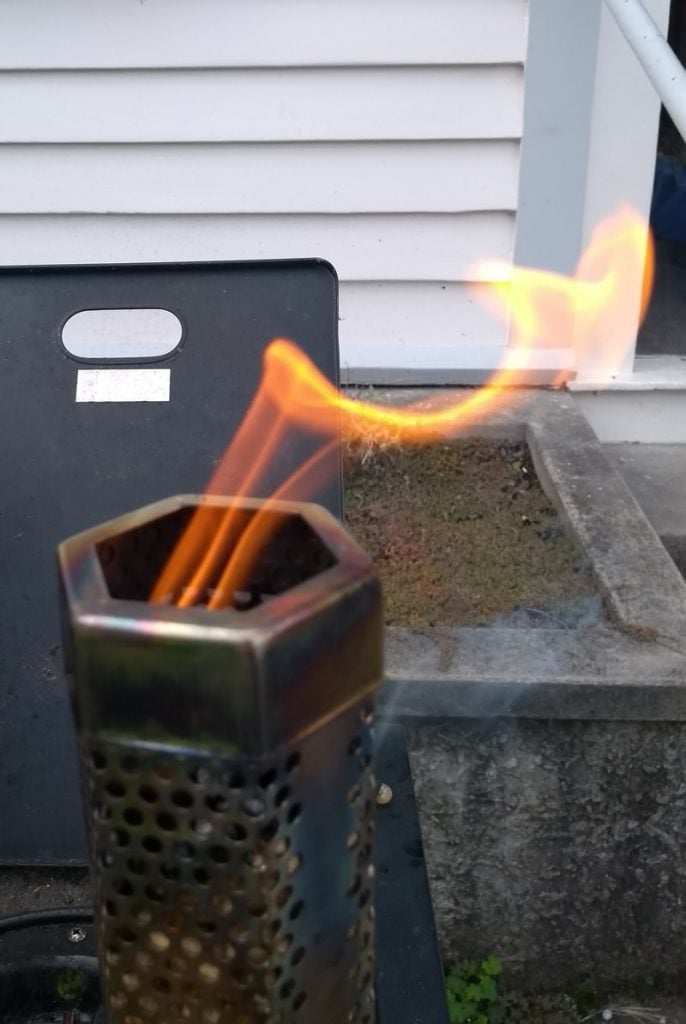
As you can imagine, you can use many different areas or smoking boxes with a pellet tube smoker. One thing to note, as you always want a reasonable amount of airflow even with an adjustable vent or at least a chimney is that you don’t get overly smoked bacon (over-smoking is a very common issue from the comments on this site).
When it comes to smoking I believe less is more, the worst thing is cold smoking something, and less is way better than being over-smoked and bitter.
To read more about using a pellet tube smoke for bacon and the projects find a link here.
If you want to read a review and some tips on choosing a pellet tube smoke check out this page over here.
Smoke Generators
As mentioned above, this is the variable control smoke generator one of my favorites.
And you can attach it or bolt it onto many different systems. One of my favorites which I helped a friend with was attaching a Smokai smoke generator to a wine barrel.
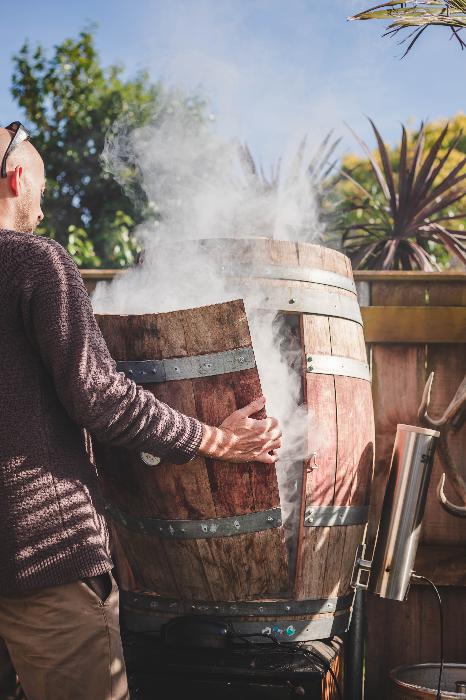
Potentially maybe there could be some flavor from the barrel wood but this is just a theory of the stage.
You can also use a smoke generator or pellet tube smoker (I wrote an article on the easiest smokers to use here) for low and slow smoking or hot smoking as well.
The 1 L which is approximately 2 pounds of smoking wood pellets for a Smokai smoke generator can last about 5 to 7 hours on a medium setting on the air pump from my experience.
There are a few other brands out there that mimic a smoke generator like Smokai, but some of these I’ve discovered don’t smoke as efficiently, a different type of burning which can create more impurities. I guess you kind of want some clean air combustion.
Smokers for Bacon Summary
So hopefully this is giving you a little insight into the many options you have for bacon, as mentioned if you’re looking for the ham style, you’ll want to do wet salt brining and cooking/hot smoking.
But I generally do the house bacon with a dry salt cure using the equilibrium method and then cold smoking and drying until about 20% weight loss to intensify the flavor.
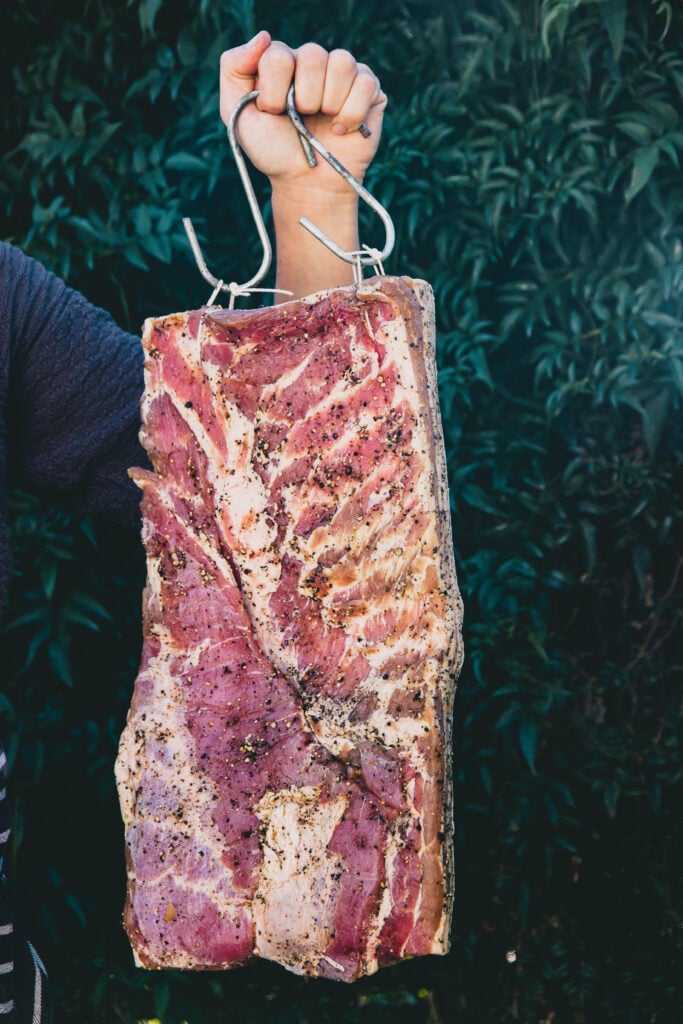
For the last tip, I like to slice the bacon once it’s ready and place individual slices on a parchment or baking paper sheet. I then freeze these slices and store them in a bag once frozen. This means I can just grab a handful and throw it into the frying pan whenever I want to have some tasty smoked bacon.
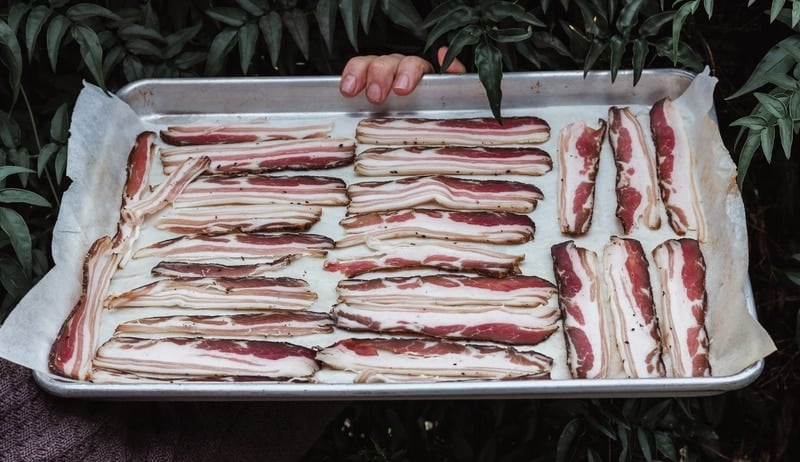

Tom Mueller
For decades, immersed in studying, working, learning, and teaching the craft of meat curing, sharing the passion and showcasing the world of charcuterie and smoked meat. Read More
